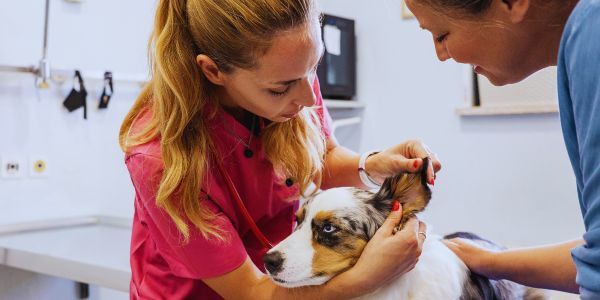If your team is delivering top-notch medical care but still encountering frustrated clients or miscommunications, it may be time to examine how the team communicates with pet owners more closely. Clear, consistent, and value-driven communication can ease tension, build client loyalty, and reduce phone call volume. More importantly, consistent communication also streamlines operations and improves team efficiency by reducing repeat calls, clarifying expectations, and minimizing preventable client confusion.
Here’s how to get your whole team aligned on communication that works:
Train for Value-Based Messaging (Not Just Information Sharing): Clients don’t just want the what—they need the why. Helping your team explain services in a way that highlights benefits for the pet and owner (not just medical jargon) builds trust and increases compliance. Try a simple twist in the words used. Instead of “She needs a dental cleaning.”, try “We recommend a dental cleaning for Fluffy because we found tartar and early signs of gum disease. Treating this now helps prevent pain and infection later.”
Host a 15-minute huddle where team members practice reframing standard services in client-friendly terms. Staff gain confidence and reinforce shared messaging by practicing as a team, improving efficiency across roles.
Make Every Appointment a Learning Opportunity: Educating clients during appointments is one of the best ways to improve outcomes—and it doesn’t have to be time-consuming. When all team members contribute to client education, the burden doesn’t fall solely on the DVM, which improves time management and supports whole-team utilization. Teach the team to use visuals to support messaging:
Show dental x-rays or flea comb findings
Relate services back to the pet’s comfort, health, or longevity
Encourage questions and explain what to expect next
Train receptionists and technicians to reinforce key messages—such as post-op instructions or the importance of medication—so clients hear them more than once (and in plain language). This redundancy supports client understanding and reduces callbacks and confusion, boosting operational efficiency.
Professionalize Phone, Email, and SMS Interactions: Every touchpoint matters. Whether a reminder call or a quick text, tone and clarity can shape a client's entire experience. When the team utilizes shared scripts, templates, and tone guidelines, it reduces variation and ensures your communication system runs smoothly.
Training Opportunities
On the phone: Smile while speaking (seriously—it’s noticeable!), avoid rushing, confirm understanding
In Email: Use a warm, professional tone; keep it scannable with short paragraphs or bullet points
In SMS: Be concise and polite; use templates for consistency.
Example: SMS: "Hi [Client Name], this is [Clinic Name]. Just a reminder that Max is due for his wellness exam. Give us a call or reply here to book! "
Great communication isn’t about having a script—it’s about aligning your team around a shared goal: educating and empowering pet owners. Efficient practices use communication protocols to prevent bottlenecks, delegate client education, and allow team members to stay in their zone of genius.
Regular mini-trainings, cheat sheets, and even reviewing recorded calls (with permission) can improve consistency and optimize staff time. When communication is consistent and efficient, it becomes a practice-wide strength, not a one-person task.
